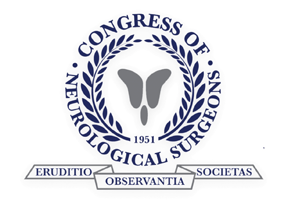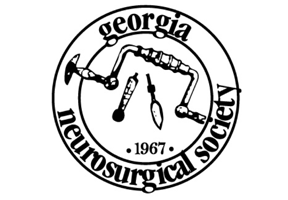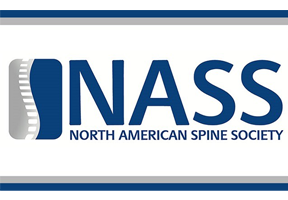Back pain—it’s so specific and, yet, so vague.
On the one hand, saying you experience pain in your back means that you know exactly what area of the body is affected. On the other hand, the back is a large and complex area. Whether your pain is felt at the base of the neck, in your lower back, or anywhere in between, there are many types of injuries you can experience, and a range of pain types each injury or complication can produce.
Let’s examine each type of back pain and determine possible causes to help you better understand the types you’re likely to experience.
But first, let’s address some of the most common sensations people with back pain can experience:
Common Symptoms of Back Pain
- Back soreness
- Back stiffness
- Burning pain that radiates
- Localized or general ache that’s dull
- Pain that travels to the buttocks, legs, feet, or hips
- Pain that’s sharp, stabbing, or electric-feeling
Types of Back Pain and Possible Causes
Back pain is most often felt in the lower back, but it’s possible to feel pain in the mid back or neck area as well. It can also range in duration, frequency, location, intensity (mild to severe), and quality (dull to sharp), depending on the injury or the condition causing it.
Pain Types Associated With Duration
Acute Back Pain
Acute back pain describes pain in the back, most commonly in the lower back, that lasts only a few days or a few weeks (no more than six weeks).
Acute back pain can range from dull to sharp and can be caused by a number of injuries or complications, including:
- Muscle strain
- Muscle tears
- Back sprains
- Poor posture
- Unfamiliar sleeping positions
Generally speaking, acute or short-lived back pain is the result of an injury or a brief change in the back’s normal mechanical behavior. Lifting something too heavy, twisting the back a little too much, or putting your back in a position it is not accustomed to can all result in pain that is frustrating to deal with but will heal on its own fairly quickly.
For some, acute back pain is a one-time issue, while others can experience bouts of acute back pain throughout their adulthood.
Subacute Back Pain
Subacute back pain is defined as pain that lasts longer than four weeks but ultimately fades before the 12-week mark.
Subacute back pain can be caused by many of the same injuries or complications that cause acute back pain, from muscle strain to poor posture or sleeping positions.
Patients with subacute or acute back pain can help speed up recovery by:
- Applying ice
- Taking pain relievers
- Resting
- Stretching
- Developing proper posture
- Sleeping in a back-friendly position
- Making cautious, gentle movements when standing, sitting, lifting, etc.
Like acute back pain, subacute back pain can be a one-time issue for patients, or it can be a recurring problem that comes and goes throughout adulthood.
Chronic Back Pain
Unlike pain that subsides after a few days or a few weeks, chronic back pain lasts for 12 weeks or longer, sometimes for months or years if left untreated. It can be dull and mild or sharp and severe, depending on the core issue causing the pain.
Chronic back pain can be caused by a number of conditions, including:
- Compression fractures
- Degenerative disc disease (spondylolysis)
- Disc herniation
- Injury or trauma to the back
- Osteoarthritis
- Spinal stenosis
- Scoliosis
Pain Types Associated With Location, Intensity, and Quality
Axial Back Pain
Affecting the lower back only, axial back pain is the most common type of back pain patients complain of. It can be acute or chronic, and it does not travel to other locations like the buttocks, legs, or feet.
Axial back pain can be felt on the right or left side of the spine, usually where the spine and hip bones meet. It is usually nonspecific, meaning the patient experiences general pain rather than a localized pain.
Because axial back pain is nonspecific, it can be hard to describe and even harder to diagnose. This pain type is commonly associated with general wear and tear of the spine’s muscles, ligaments, soft tissues, and tendons and can cause:
- General lower back pain that worsens with intense activity (running, lifting, fast movements, etc.)
- General lower back pain that worsens with certain sitting or sleeping positions
- General low back pain that alleviates with rest
Referred Back Pain
Referred back pain is back pain that originates from another body part or is caused by a complication with an organ or other anatomical structure. Have you ever heard of someone complaining about back pain when experiencing a kidney stone? That’s referred pain.
The nervous system is a highly complex one, with nerve channels that start at either the spine or the brain. Areas like the back, arms, and legs have their own nerve paths to the sensory cortex in the brain—when something occurs to cause pain in an area like the back, receptors will send pain signals from the area to the sensory cortex, telling the brain, “Something is wrong with the back.”
Internal organs, however, do not have direct nerve paths to the sensory cortex. So, when a pain-inducing complication occurs with an organ, the organ has to use an available nerve pathway to communicate with the sensory cortex, which can confuse the sensory cortex and the brain. When experiencing a kidney stone, the kidney’s receptors will send a signal via one of the pathways connected to the back, causing the brain to interpret the signal as a back issue and causing the patient to feel back pain.
Problems that cause referred back pain can include:
- Urinary tract infections
- Kidney stones or kidney infections
- Heart attacks or heart disease
- Lung complications
- Gallbladder issues
- Liver issues
- Colon issues
- Spleen ruptures
Radicular Back Pain
Radicular back pain is pain that comes from nerve issues in the spine. Radicular back pain starts at the spine and can travel to other areas of the body. If it occurs in the lower back, it can travel to the buttocks, legs, feet, and hips; if it starts in the mid to upper back, it can travel to the shoulders, arms, hands, or chest.
Sciatica is the most common and well-known form of radicular back pain.
Radicular back pain can be caused by a number of conditions or complications affecting the spine’s nerves and nerve roots, including:
- Disc herniation
- Spinal stenosis
- Arthritis
- Bone spur development
- Scar tissue development
- Diabetic neuropathy

Muscular Back Pain
Muscular back pain occurs when the muscles in the back are strained, sprained, or generally overworked.
Muscular back pain can occur anywhere on the back, whether in the shoulders, upper back, midsection, or lower back. It’s a typical gym or workplace injury and can be caused by:
- Lifting something too heavy
- Lifting something with improper form
- Bending or twisting beyond the patient’s flexibility limits
- Overworking the back muscles during a workout
It’s even possible to develop muscle pain due to prolonged sitting or inactivity.
Muscular back pain is generally an acute issue that can heal in a few days or weeks with proper self-care.
Are you experiencing back pain that will not subside with at-home treatments? Talk to the neurosurgeons at Georgia Neurosurgical Institute to find relief.
No one should have to endure a lifetime of back pain. If you have a mild to severe case of chronic or reoccurring back pain and want to find relief, our team is available to help you regain a pain-free life or manage your back pain effectively and thoroughly. We offer solutions that range from physical therapy to spinal injections or surgery, if necessary.
Discover the proper back pain treatment for you by calling Georgia Neurosurgical Institute today: 478-743-7092.
Georgia Neurosurgical Institute offers exceptional treatments for the brain and spine to patients throughout Middle Georgia. With offices in Macon and satellite locations in Dublin, Locust Grove, and Warner Robins, we’re able to treat patients in and around:
- Dublin
- Forsyth
- Locust Grove
- Macon
- McDonough
- Milledgeville
- Perry
- Warner Robins
Recent Articles






